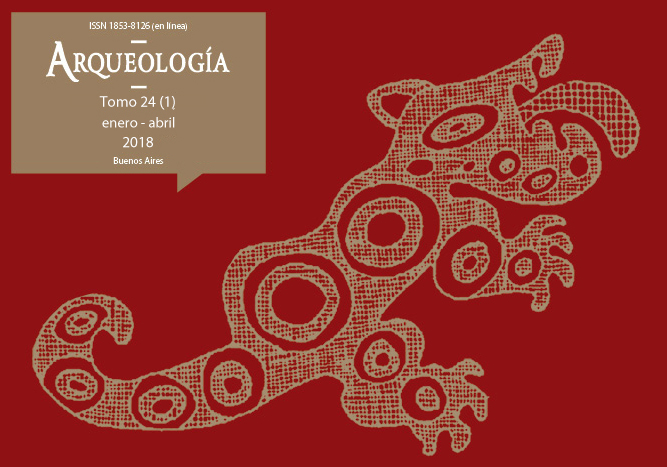Animal use in early agro-pastoral societies: zooarchaeological analysis of a midden from the village of Palo Blanco (Fiambalá Valley, Catamarca)
Keywords:
Zooarchaeology, Camelids, Herding, Valley, Catamarca, Formative
Abstract
In this article, we present the archaeofaunal analysis of an assemblage recovered from a midden located in the village of Palo Blanco (Fiambalá Valley, Catamarca). This analysis allowed us to identify changes and continuities among Palo Blanco’s earliest agro-pastoral societies in regard to animal procurement, management, exploitation, and consumption strategies. The exploitation of domestic camelids was recorded from the beginning of the occupation of Palo Blanco (ca. 400 BC). During the earliest period (400 BC – A.D. 400), domestic camelid use was combined with the exploitation of small wild animals, while after A.D. 400 it was supplemented by the hunting of wild vicuñas. Llamas were raised mainly for their meat, bone marrow and fat; however, these domestic camelids were also used as beasts of burden and as a source of fiber to make textiles and bone to manufacture artifacts. The development and consolidation of this pastoralist strategy was possible in a village context where agriculture provided the main source of sustenance for the villagers while hunting provided additional resources.Downloads
Download data is not yet available.
How to Cite
Miyano, J. P. (1). Animal use in early agro-pastoral societies: zooarchaeological analysis of a midden from the village of Palo Blanco (Fiambalá Valley, Catamarca). Arqueología, 24(1), 77-101. https://doi.org/10.34096/arqueologia.t24.n1.4227
Section
Articles
Authors who publish in this journal agree to the following conditions:
- Authors retain copyright and yield to the journal right of first publication with the work registered with attribution license Creative Commons, which allows third parties to use the published always mentioning the authorship of the work and first publication in this magazine.
- Authors can make other independent and additional contractual arrangements for the non-exclusive distribution of the version of the article published in this issue (p. Eg., Inclusion in an institutional repository or publish it in a book), provided that clearly indicate that the work was published for the first time in this magazine.
- It allows and encourages the author / s to publish their work online (eg institutional or personal pages) before and during the process of revision and publication, as it can lead to productive exchanges and greater and more rapid dissemination of work published (See The Effect of Open Access).





(1)13.png)






1.jpg)
1.jpg)


13.png)
1.png)


(1)1.png)









